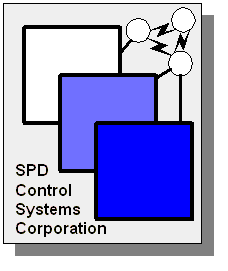|
|
SPD Control Systems Corporation The Systems Behind the Glass(® _______________________________________________________________________________________________________ |
► Home
► Products
► Patents
► Team
► Media
► Contacts
► Support
Changing the way you view windows®

Building Energy Management Control System (BEMCS)
Our Building Energy Management Control System (BEMCS), using wireless technology, enables all of the windows in a residence or commercial building to have "building intelligence." This will optimize energy utilization of buildings, improve occupant comfort and productivity, enhance aesthetics, and support sustainable building design. The building's windows are controlled manually and automatically.
Automatic mode allows for presets, sensor and advanced algorithm control. Presets provide the times in the day when tint settings change to a designated value. Light and occupancy sensors automatically control the tint levels based on sensor detected events. Advanced solar heat gain algorithms are targeted at reducing the energy usage of a building. See below: Building Energy Management Control System.
SCSC's Building Energy Management Control System allows building administrators to control and manage their buildings' automation systems with optimum energy efficiency. Our initial building control system supports variable tint SPD Smart Glass. Our system optimizes the energy saving qualities of Smart Glass.
BEMCS Features
-
Core Functionality - The software intensive system provides a framework for easy customization to satisfy customer requirements.
-
Scalable - The system supports small buildings to skyscrapers.
-
Devices - The BEMCS supports control modules, sensors and switches. The control devices may be intelligent or dumb. Our intelligent controller provides local control of multiple sensors, controls and switches allowing immediate control.
-
Wireless and LAN-based Network - The system supports wireless and LAN-based network nodes. The wireless system is a ZigBee (IEEE 802.15.4) redundant node mesh network.
-
Customization / Additional devices - Our BEMCS is designed to allow it to be customized to meet the exacting requirements of our customers and to easily configure additional switches, sensors, and controllers.
-
Access - The system is accessed using a standard web browser allowing a wide range of devices to be used locally and remotely. Devices include PC, Mac, iPhone, Blackberry, PDA's and any other device with a standard web browser. The smaller screens of mobile phones and PDA's are accommodated.
-
Master Building Control System (MBCS) - This is the "brains" of the BEMCS providing advanced energy efficiency control algorithms, system configuration, system control and reports. Refer to MBCS.
-
Modes - Automatic modes and manual switch/sensor/network administrator overrides.
-
Automatic Energy Efficiency Algorithms - Multiple automatic energy efficiency algorithms are provided and additional customer specific algorithms may be included. Automatic mode allows for presets, sensor and advanced algorithm control. Presets provide the times in the day when tint settings change to a designated value. Photo and occupancy sensors automatically control the tint levels based on sensor detected events.
-
Glare and Daylighting - Glare and daylighting are factors in our energy efficiency algorithms to maximize visual comfort and reduce energy use. Refer to,
Smart Glass and Daylight Harvesting: Advanced Light Control That Saves Energy
-
Control Zones - Windows are grouped into Control Zones that are controlled as a unit using sensors, switches and automatic algorithms. Control Zones include windows, rooms, floors, facades and tenant windows.
-
Graphic Displays - Graphic displays with multiple views including network, building, façade, and tenant views.
-
Legacy Networks - Interfaces to legacy building networks are supported using gateways.
-
External Control - The system provides an XML interface to a central building control system to allow all SPD windows to be controlled externally. This allows all building systems (HVAC, lighting, fans, ...) to be coordinated. For example, if natural light is available from the windows then the rooms lights can be adjusted.




©2006-2010 SPD Control Systems Corporation All Rights Reserved

